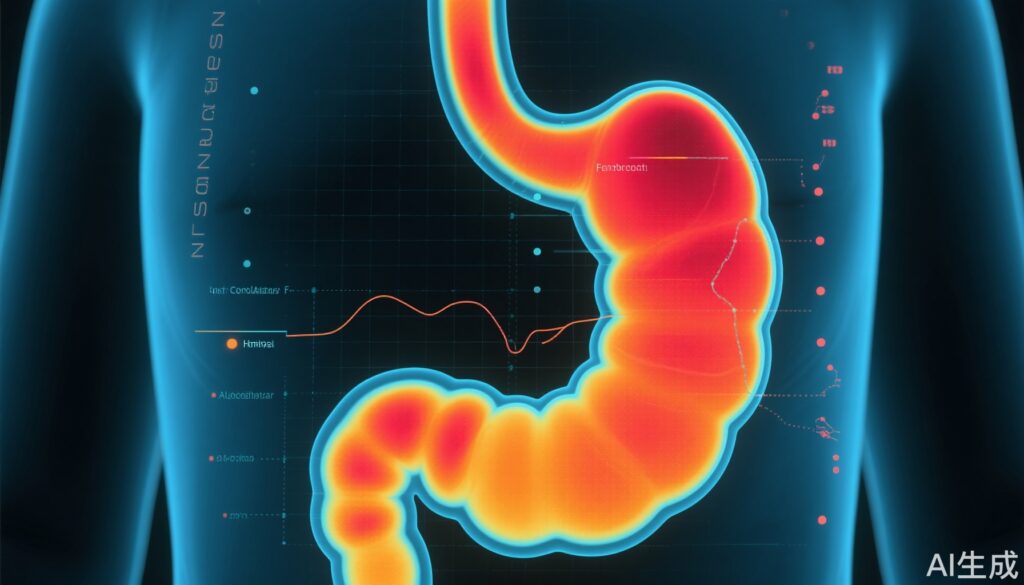Highlights
- Fecal hemoglobin (f-Hb) concentration measured by FIT correlates quantitatively with future colorectal cancer (CRC) and advanced neoplasia (AN) risk—even below traditional positivity thresholds.
- Individuals with f-Hb levels near, but below, current FIT cutoffs face a substantially elevated risk of colorectal neoplasia compared to those with undetectable f-Hb.
- Meta-analysis of over 4.4 million individuals demonstrates up to a 13-fold increase in neoplasia detection risk at higher sub-threshold f-Hb values.
- Emerging evidence supports personalized, interval-based CRC screening strategies that incorporate quantitative f-Hb data for optimal resource allocation and earlier detection.
Background and Disease Burden
Colorectal cancer (CRC) is the second leading cause of cancer-related mortality globally, accounting for nearly one million deaths annually. Early detection through population screening is pivotal for reducing both incidence and mortality. The fecal immunochemical test (FIT), which quantifies fecal hemoglobin (f-Hb), has become the backbone of CRC screening programs in many countries due to its noninvasiveness, cost-effectiveness, and reasonable sensitivity for advanced neoplasia. Traditionally, FIT results are dichotomized: individuals with f-Hb above a set threshold (commonly 10–20 µg/g) are referred for colonoscopy, while those below are retested at standard intervals. However, mounting evidence suggests that this binary approach may overlook a substantial group at heightened risk of interval cancers—particularly those with f-Hb levels just below the positivity cutoff. Refining risk stratification using the quantitative spectrum of f-Hb may optimize screening efficacy and resource utilization.
Study Design
A recent systematic review and meta-analysis published in Gastroenterology (van den Berg DMN et al., 2025) addressed this clinical gap by evaluating the relationship between prior negative FIT-derived f-Hb concentrations and subsequent detection of colorectal neoplasia. Thirteen cohort studies encompassing approximately 4.49 million screened individuals from Europe and Asia (including Spain, France, the Netherlands, Taiwan, Denmark, Italy, and South Korea) were included. Eligible studies recorded f-Hb concentrations in FIT-negative participants and tracked colorectal neoplasia detection at follow-up screening rounds.
Data sources included major medical databases (Embase, Medline, Cochrane, Web of Science, Google Scholar). The primary endpoint was the dose-response relationship between f-Hb concentration (at baseline negative FIT) and relative risk (RR) of subsequent CRC and advanced neoplasia detection. Statistical analysis proceeded in two steps:
1. Study-level log-log regression of f-Hb intervals and neoplasia risk (RR, hazard ratios, odds ratios) to estimate dose-response trends.
2. Pooled summary estimates using random-effects meta-analysis, with heterogeneity assessed via I^2 and Q statistics. Sensitivity and subgroup analyses explored the robustness of findings across tumor endpoints and detection modalities.
Key Findings
The meta-analysis demonstrated a striking, graded increase in risk of colorectal neoplasia with rising f-Hb concentrations—even when all values were below the standard FIT positivity threshold. Specifically, compared to the baseline (f-Hb = 0 µg/g), the pooled risk ratios for colorectal tumor detection were:
- f-Hb 5 µg/g: RR ≈ 3.4
- f-Hb 10 µg/g: RR ≈ 5.2
- f-Hb 20 µg/g: RR ≈ 8.1
- f-Hb 40 µg/g: RR ≈ 12.8
The most pronounced increase in risk occurred between 0 and 10 µg/g, with risk rising more gradually at higher concentrations. Notably, the predictive value of f-Hb for advanced neoplasia (AN) was even stronger, with relative risks of 4.3 at 5 µg/g and 11.8 at 20 µg/g. The findings were consistent across studies regardless of whether neoplasia was detected through screening, clinical presentation, or both.
Despite significant heterogeneity (attributable to differences in screening protocols, FIT cutoff values, assay methods, and population characteristics), sensitivity analyses confirmed the stability of the dose-response relationship. The robustness of the association supports the clinical utility of quantitative f-Hb as a continuous biomarker rather than a simple negative/positive dichotomy.
Expert Commentary
This meta-analysis provides compelling evidence that the risk of colorectal neoplasia is meaningfully stratified across the spectrum of negative FIT results. The dose-response curve underscores the limitations of dichotomous cutoff-based screening and highlights the clinical opportunity to personalize screening intervals based on actual f-Hb values.
Such quantitative risk stratification could:
– Reduce missed early neoplasia cases in individuals with high-negative f-Hb.
– Decrease unnecessary colonoscopies among truly low-risk individuals.
– Improve cost-effectiveness and adherence in large-scale screening programs.
However, several caveats remain. The observed heterogeneity necessitates harmonization of FIT protocols, including standardized thresholds and reporting of f-Hb values. Individual-level risk models integrating f-Hb with age, sex, and other risk factors are needed for optimal predictive performance. Additionally, the generalizability of findings to populations with different CRC incidence or screening uptake should be evaluated.
Ongoing randomized controlled trials in the Netherlands and Italy are testing personalized screening intervals based on prior f-Hb, which may soon provide definitive evidence for the clinical implementation of this approach. Leading guidelines (e.g., US Multi-Society Task Force, European Commission) are also considering revisions to incorporate quantitative FIT data into future recommendations.
Conclusion
Quantitative fecal hemoglobin measurement, even below current FIT positivity thresholds, offers significant predictive value for future colorectal neoplasia risk. This evidence supports a shift toward personalized, risk-adaptive CRC screening strategies that move beyond the traditional binary FIT paradigm. Optimizing interval timing and resource allocation based on f-Hb could maximize early cancer detection while minimizing unnecessary procedures. Further research and harmonized standards are essential for translating these findings into clinical practice on a global scale.
References
1. van den Berg DMN, van den Puttelaar R, de Jonge L, Lansdorp-Vogelaar I, Toes-Zoutendijk E. Fecal Hemoglobin Levels in Prior Negative Screening and Detection of Colorectal Neoplasia: A Dose-Response Meta-Analysis. Gastroenterology. 2025 Mar;168(3):587-597. doi: 10.1053/j.gastro.2024.10.047.
2. US Multi-Society Task Force on Colorectal Cancer. Colorectal Cancer Screening: Recommendations for Physicians and Patients from the U.S. Multi-Society Task Force on Colorectal Cancer. Gastroenterology. 2023;164(4):980-1004.
3. European Commission Initiative on Colorectal Cancer. European guidelines for quality assurance in colorectal cancer screening and diagnosis. 2022.



